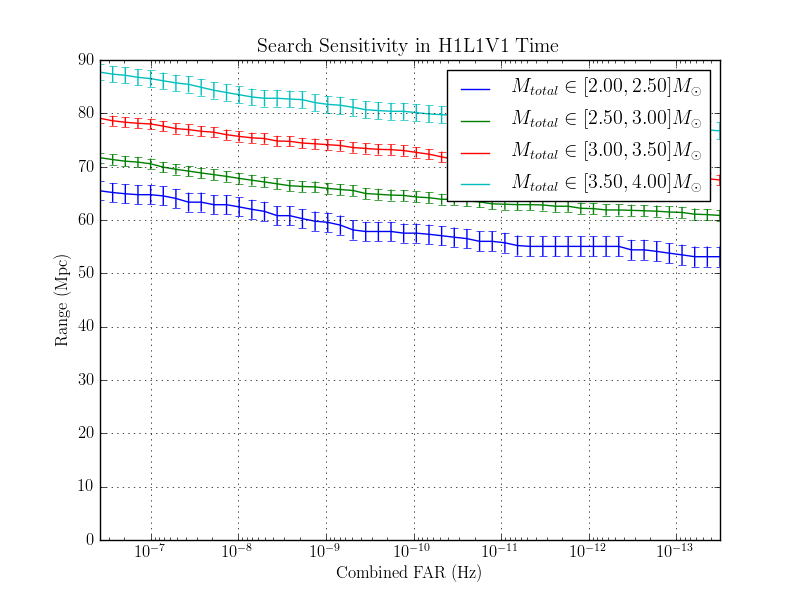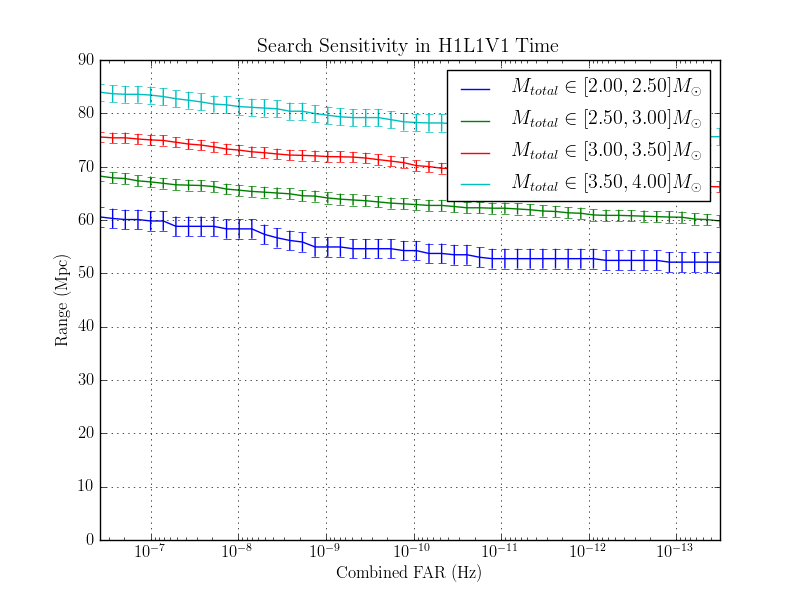 |
gstlal-inspiral
0.4.2
|
The purpose of this page is to investigate the effect of using a composite detection statistic described in arxiv:1101.0584 to first identify interesting places to reconstruct SNR. The idea is that it can save floating point operations.
This is preliminary and shouldn't be considered a final answer about whether or not this is a good idea.
Two gstlal_inspiral analyses were run. The first did not use a control peak time. The second did not, e.g.,
channa@pcdev1:~/MDC_new/test$ diff -u Makefile ../test_2s/Makefile
--- Makefile 2014-06-17 20:35:16.969869229 -0500
+++ ../test_2s/Makefile 2014-06-17 20:32:55.203392803 -0500
@@ -17,10 +17,10 @@
IFOS = H1 L1 V1
START = 966384015
STOP = 967384015
-TAG = T1200307_LV_gaussian_0s_w_zerolag_injections_40Hz_5ms_test
+TAG = T1200307_LV_gaussian_2s_w_zerolag_injections_40Hz_5ms_test
WEBDIR = ~/public_html/MDC_new/${START}-${STOP}-${TAG}
NUMBANKS = 4
-PEAK = 0
+PEAK = 2
AC_LENGTH = 351
# additional options, e.g.,
#ADDITIONAL_DAG_OPTIONS = "--blind-injections BNS-MDC1-WIDE.xml"
The results are here:
The range plots are shown here:


 1.8.1.2
1.8.1.2